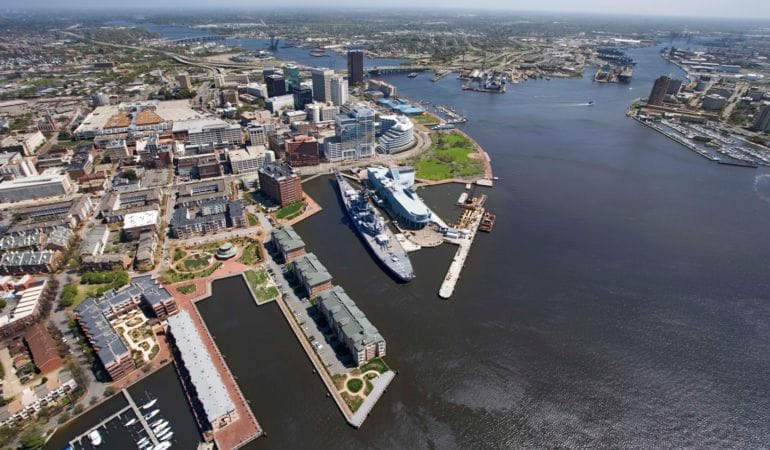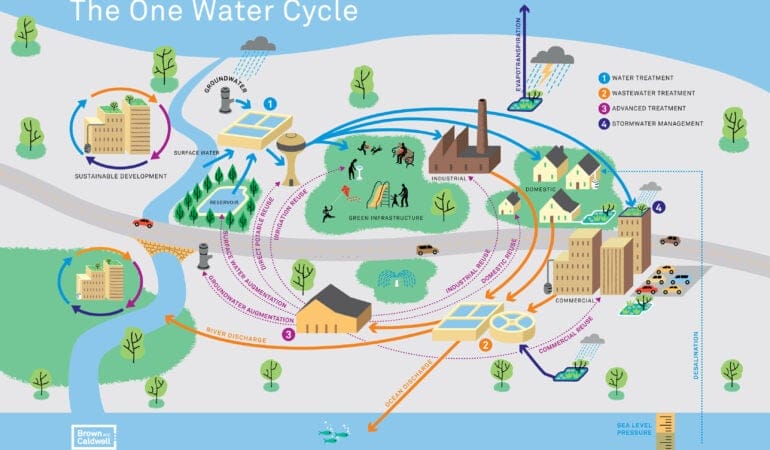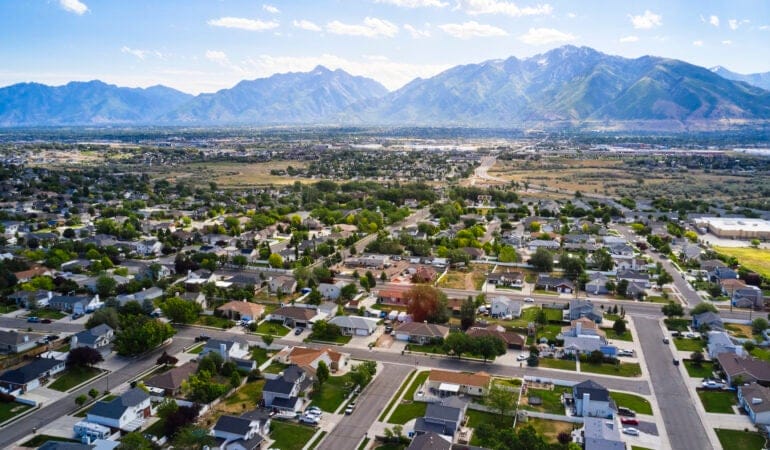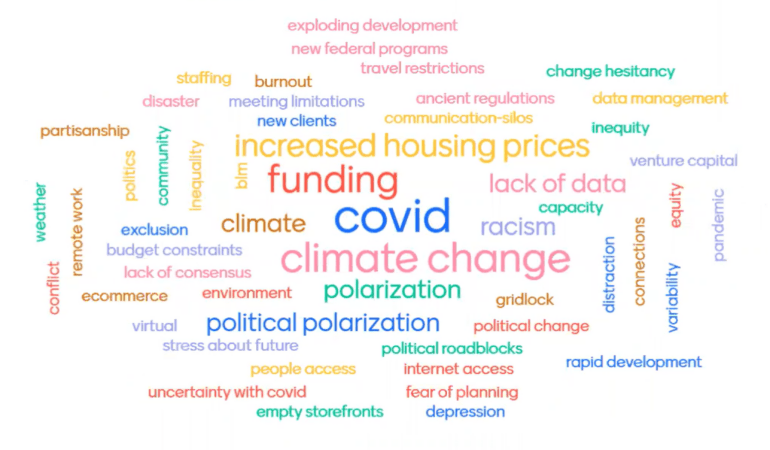Last fall, water levels in Utah’s Great Salt Lake reached historic lows. Severe drought fueled by climate change and increased demands on upstream water systems have shrunk the lake to nearly half of the 1,700 square miles it covers in an average year, making it “a puddle of its former self.” Scientists warn that the lake could disappear entirely in the not-too-distant future.
The losses at the Great Salt Lake represent just one aspect of a looming water crisis in Utah. The entire state is suffering from drought, with statewide reservoir storage capacity at 50 percent. Lake Powell, a reservoir that plays a critical role in the Colorado River Basin’s complex water storage and delivery system, is at just over 26 percent capacity. “It’s not just the Great Salt Lake,” said Utah Governor Spencer Cox at a press conference in November. “It’s the Colorado River Basin, it’s all our lakes and streams and [water] storage capacity . . . . This is an all-hands-on-deck issue.”
During the past few years, policy makers in Utah—one of the most arid U.S. states and one of the fastest-growing—have begun to address this crisis with strategies designed to promote water conservation while supporting population growth. As part of that effort, the state appropriated funds for a project led by the Babbitt Center for Land and Water Policy and Western Resource Advocates that will help communities better coordinate land and water planning and create more sustainable futures.
“As one of the fastest-growing states in the nation, how we grow and develop today will set our water use for decades to come,” said Candice Hasenyager, director of the state Division of Water Resources (DWR). “The Division of Water Resources has been a strong proponent of water conservation for decades. The next logical step toward adapting to climate change by adopting waterwise practices is integrating water considerations into the planning process.”
More Demand, Less Water
Projections suggest that the number of households in Utah could double by 2060, from 1.1 million to 2.2 million. As the realities of supporting a swelling population with a dwindling water supply began to hit home, the state released a water strategy in 2017, followed by regional water conservation goals in 2019. These plans aim for a statewide reduction in per capita water use of about 16 percent by 2030 and 26 percent by 2065.
The state legislature has taken action to support these goals, creating a multi-year water banking pilot project, enacting a state water policy, and, in 2021, appropriating $270,000 for the water and land use planning integration project. (These legislative acts are significant accomplishments in a state where water-related legislation is frequently contentious.) In addition, a bill passed by the state legislature in early 2022 will require water use and preservation elements to be included in municipal and county comprehensive plans, a step the Babbitt Center recommends in the U.S. West and beyond.
The recent water shortages, especially in highly visible locations like the Great Salt Lake, “have caught people’s attention in a way that’s making them realize solutions are needed now,” said Marcelle Shoop, director of the Saline Lakes Program for the National Audubon Society. Shoop, who served on a statewide steering committee charged with ensuring adequate water supplies for Great Salt Lake, says improving the integration of land and water planning was a key recommendation that came out of that process. “When you make land use decisions, you’re making a water use decision,” she said. “And you’re locking it in for a very long time.”
To help spread that message, DWR embarked on the land and water integration project in 2021, with initial funding from the Great Salt Lake Advisory Council. The primary output of the first phase of that work was the development of a Utah-specific framework for community action—refined with input from 12 local governments, water providers, and community organizations—that illustrates how communities can better integrate water and land use planning. The framework recommends four stages of work: form a core water and land use planning team per community; assess local conditions; identify points of impact; and take action. As part of Phase One, the Babbitt Center and Western Resource Advocates also shared a stakeholder checklist and community self-assessment tool that can provide tangible guidance for communities.
Interviews with community stakeholders were enlightening, said John Berggren, policy analyst at Western Resource Advocates. “Only one community said they could continue to grow with existing supplies without many constraints in the coming decades,” he said. “Some communities anticipate most of their growth will be in redevelopment or infill, while others are preparing for new development, but there was widespread concern about having enough water for current and future demands—and this is compounded by climate change.”
Growing Water Smart
The 2021 appropriation makes it possible for the Babbitt Center, Western Resource Advocates, and Utah State University’s Center for Water-Efficient Landscaping to embark on a second phase of the project, working directly with communities via the Growing Water Smart program.
Growing Water Smart, which originated as a joint program of the Sonoran Institute and Lincoln Institute, brings small groups of community stakeholders together for several days to learn, collaborate, and create plans applicable to their local residents and needs. Participants gain a better understanding of the connections among land use, water supply and demand, and climate change, and they also build professional relationships—with each other and with peers throughout their regions. Launched in 2017, the program is also operating in Arizona, California, and Colorado, and discussions are underway with partners in Mexico about adapting it for communities there.
“The heart of Growing Water Smart is getting land use planners and water managers from the same communities together to talk to each other, sometimes for the very first time,” says Faith Sternlieb, who oversees the program and its expansion for the Babbitt Center and helps facilitate community workshops. “Once they start sharing resources, data, and information, they see how valuable and important collaboration and cooperation are.”
After each workshop, the project team follows up with participants for up to 12 months to help participant groups implement the strategies developed in the workshop, which often take the form of a one-year action plan. The team typically provides additional resources and technical assistance opportunities specific to each participant community’s needs as well.
Sternlieb expects this phase of the project to include at least two workshops that could include as many as 12 communities (six community teams per workshop). She is hopeful that the Growing Water Smart team will be able to continue to build partnerships and raise funds to hold a third workshop in the state: “That will help ground the program and allow us to draw important lessons learned, recommendations, and case studies that will be helpful for communities across Utah.”
Hasenyager of DWR said she hopes the upcoming Growing Water Smart workshops will serve as examples for other Utah communities, contribute to more widespread understanding and implementation of integrating land use and water planning, and help build relationships between water planners and land use planners at the local level.
“At the conclusion of the workshops, the Division will continue to pursue opportunities to assist Utah communities to integrate water considerations into their planning processes,” Hasenyager said. Ultimately, she added, “we want to make better decisions on how we grow and use water in the state.”
Image: Residential development in Utah. Credit: RichLegg/E+ via Getty Images.
Katharine Wroth is the editor of Land Lines.






